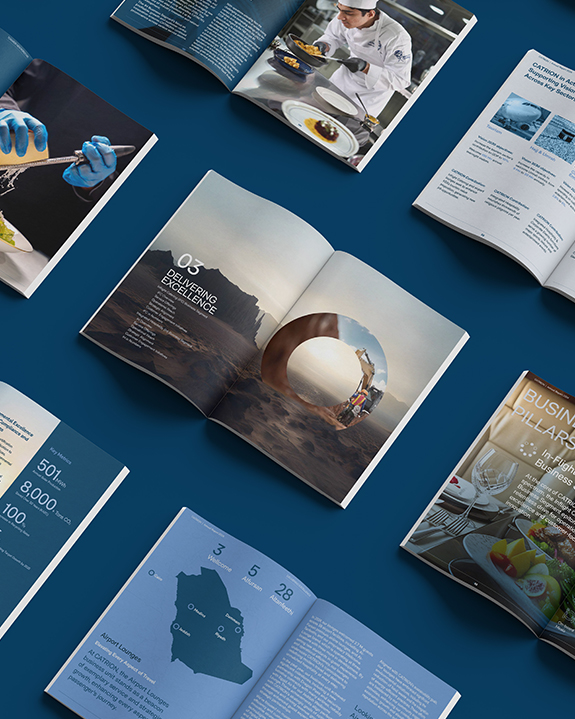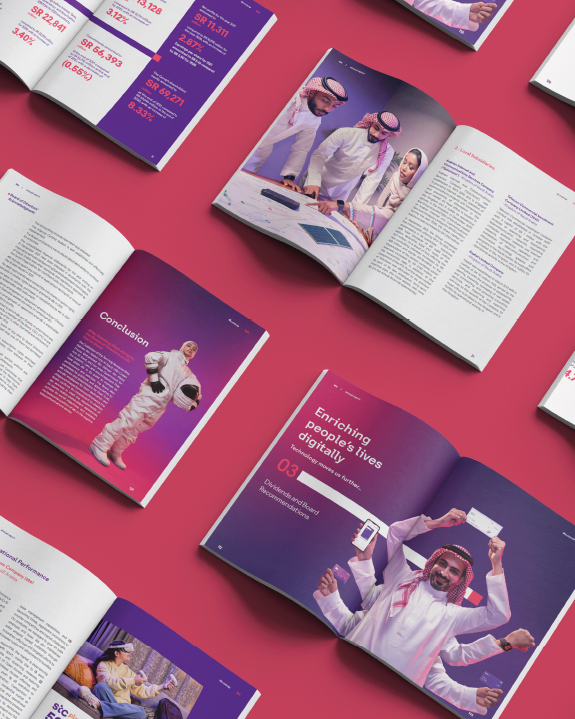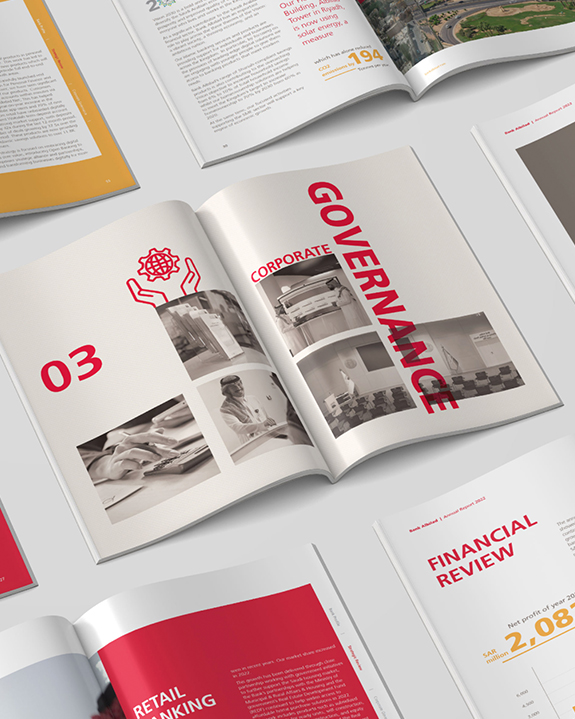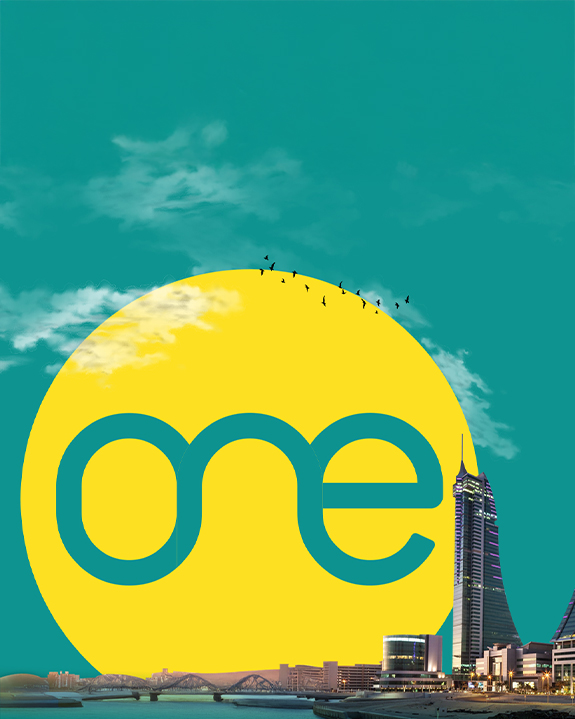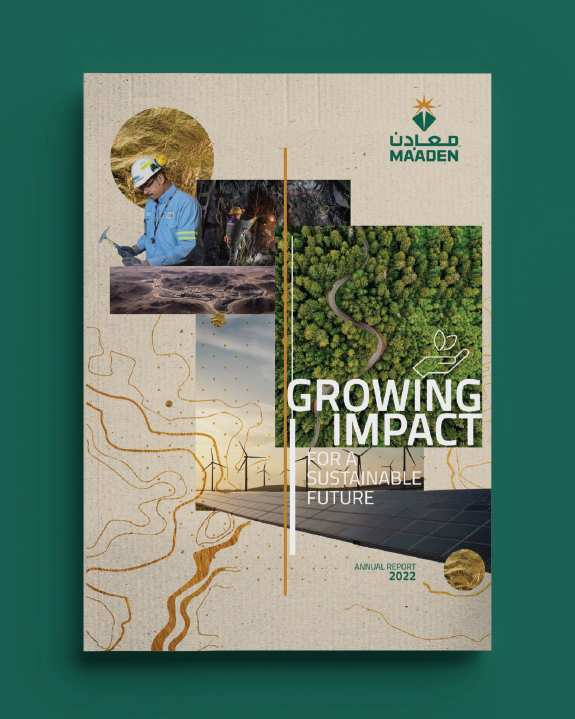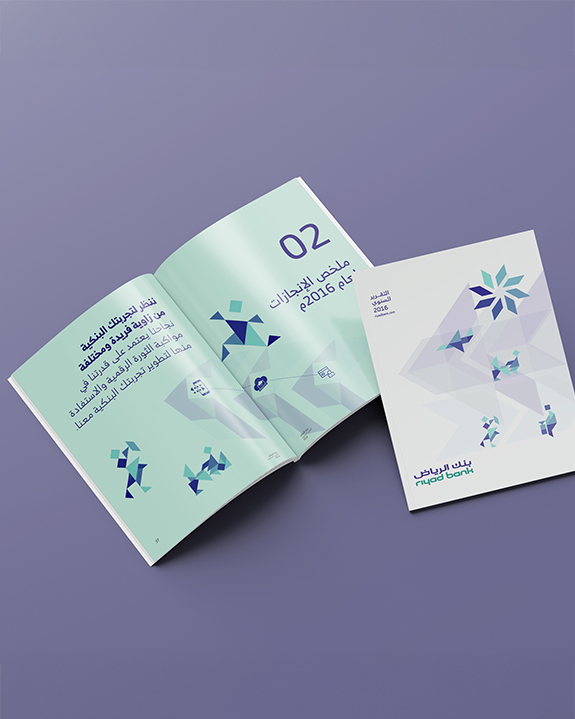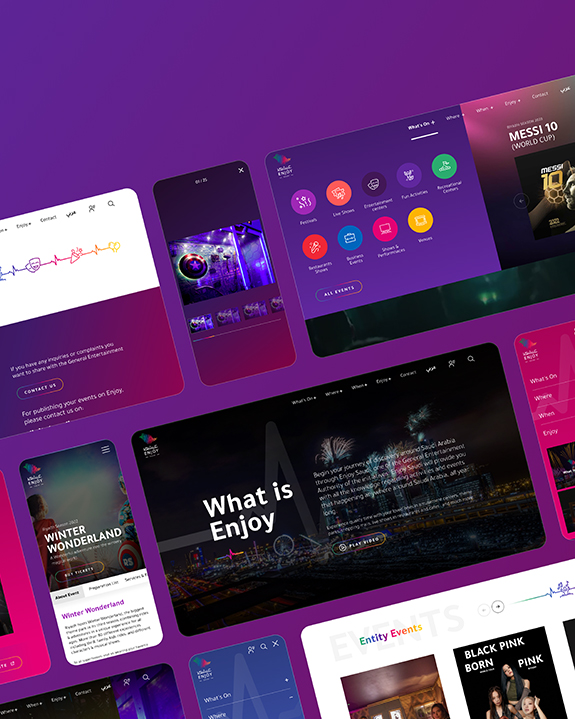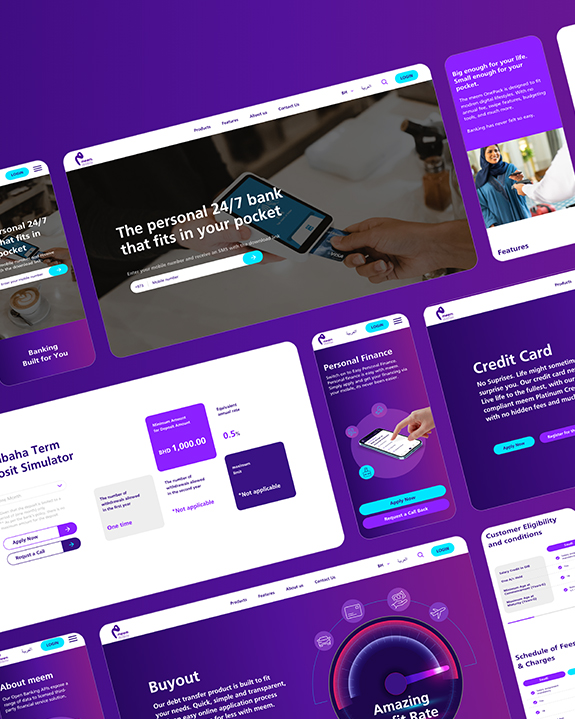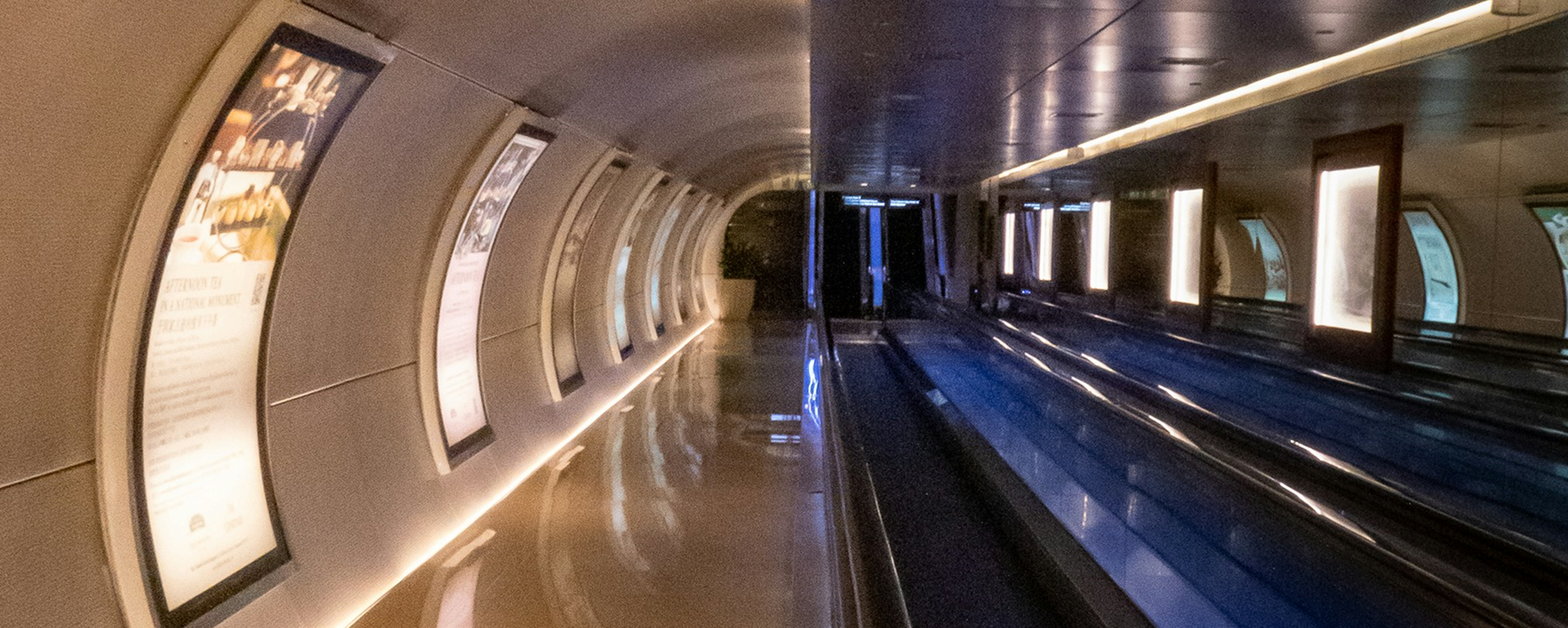Your Brand Is a System,
Not a Story; And That’s a Good Thing
Build the base once. Tell better stories forever.
Stories move people. Systems keep you remembered. If your tone changes with every campaign and your Arabic posts feel “translated,” you’re telling scenes without a set. Treating brand as a system turns scattered moments into a repeatable memory, across launches, socials, decks, product UI, and investor materials.
What “System” Really Means (and what it gives you)
Not a style guide. An operating layer.
the space you own and the claim you’ll prove.
Message architecture ,
narrative + 3–5 proof pillars that travel.
tone sliders, microcopy bank, commands/CTAs that feel native in both directions.
type pairs (Arabic/Latin), grids, spacing, color logic, motion rules.
Naming logic ,
products, tiers, and features that make sense together.
Governance & metrics ,
asset hub, rules, champions, and what you measure (speed, adoption, recall, conversion).
What you get:
speed, consistency, Arabic/English parity, and proof that operations, not taste, drive your brand.
Spark Insight:
If non-designers can’t ship on-brand work without help, you have a story, not a system. .
Story Still Matters, It Sits on Top of the Base
Stories change by audience and moment. The system keeps them coherent.
Four Everyday Stories, System-First
Launch
Base you use: positioning + pillars, naming logic, motion rules.
Output: product name that fits the portfolio, a 50-word stance, hero visuals that match the motion system, AR/EN CTAs from the microcopy bank.
Base you use: proof pillars, chart components, tone sliders.
Output: one-slide numbers that compare vs. plan, a 120-word summary, social cutdowns that match the series template.
Culture/Event
Base you use: voice map, photo guidelines, brand patterns.
Output: photo crop rules that avoid “stocky,” AR/EN captions that sound like a person, not a translation.
Issue/Crisis
Base you use: governance, escalation tone, microcopy.
Output: pre-approved holding lines in both languages, clear sequencing across channels, consistent headers and disclaimers.
System → Story: A Quick Map
| System Element |
What It Controls |
The Story Outputs It Generates |
| Positioning line |
Promise and angle |
Headlines, intros, deck titles |
| Pillars (3–5) |
Evidence categories |
Case formats, proof modules, FAQ topics |
| AR/EN voice map |
Tone, commands, idioms |
CTAs, captions, error text, disclaimers |
| Type pairs + grid |
Rhythm and hierarchy |
Screens, posters, reports, slides |
| Tokens (spacing, radii, color) |
Consistency at speed |
UI components, social templates |
| Naming rules |
Portfolio logic |
Product names, tiers, internal code names |
| Governance |
Who edits what |
Review paths, faster approvals |
| Metrics |
What “good” means |
Adoption, speed, recall, conversion deltas |
When You Systemize, Three Frictions Disappear
Approval ping-pong
Less “can you review?” because rules exist.
Bilingual rework
AR/EN is designed in, not pasted later.
Signals you’re on track:
first-draft acceptance rates rise, asset reuse climbs, Arabic engagement closes the gap with English, and your feed looks intentional week to week.
Runbook: Fix a Symptom in One Move
System move
Build an AR/EN voice map (imperatives, politeness, numerals, dates), pair Arabic/Latin type by weight, add RTL components.
One action
Write 10 reusable CTAs in both languages and test in two channels.
System move
Define naming tiers (family → series → feature), character limits, and roots/prefixes.
One action
Rename one small feature using the new rules; ship the before/after.
System move
Slide components + data chart patterns + proof module.
One action
Publish a 12-slide “must-use” deck with locked master layouts.
Symptom
Social looks different every week.
System move
Series programming (3 anchors), motion rules, caption patterns.
One action
Launch two series; schedule six weeks; measure completion rate.
A Two-Week Stabilize Sprint (foundation only)
Day 1–2: Align
Pick a stance line and 3–5 pillars. Approve with leadership
Day 3–5: Voice
Draft AR/EN tone sliders + microcopy bank (headlines, CTAs, disclaimers).
Day 6–9: Visual system
Lock type pairs (Arabic/Latin), grid, spacing tokens, and 10 core components.
Day 10–12: Naming
Document product/tier rules; rename one live example.
Day 13–14: Enable
Ship a mini hub: stance, pillars, voice map, components, and three ready-to-use templates (deck, post, landing).
Not perfect. Stable. Now your stories fly faster.
Self-Check: Do You Run a Brand System?
We have a one-line stance leadership uses verbatim.
Our pillars map to real evidence (cases, metrics, methods).
Arabic and English feel equally native, not mirrored.
Designers and non-designers ship on-brand without hand-holding.
Product names make sense together (no orphan labels).
Slides and posts reuse components; we’re not starting from zero.
Review cycles are shorter than last quarter.
There’s a single source of truth (and people use it).
When a crisis hits, we know what to say and who approves it.
Four or fewer checks?
Start the two-week sprint.
Mini Snapshots (anonymized)
Bilingual voice map + proof modules cut sales-deck prep time by ~22% and improved like-for-like win rates.
Gov-adjacent entity (UAE)
Systemized AR/EN components reduced ad-hoc design requests by ~40% in 90 days.
Tech platform (GCC)
Naming logic + series programming lifted trial-to-paid by double digits and made the feed look “inevitable.”
Pattern: stabilize the base → stories compound.
Stories make people care. Systems make people remember. Build the base once, positioning, message, bilingual voice, components, naming, governance, and every launch, post, deck, and dashboard tells the same truth without a meeting.
Need a fast base layer?
We can audit your current assets and ship a stabilize kit (stance, pillars, AR/EN voice map, components, and templates) you can run next week.
FAQs
Are we saying “forget storytelling”?
No. We’re saying put story on a system. Stories flex by audience and moment; the system keeps tone, visuals, and proof consistent so every story adds to memory, not noise.
Won’t a system limit creativity?
Good systems focus creativity. By locking rhythm, grids, voice, and naming rules, teams spend time on ideas and craft, not on reinventing basics. The best brands feel free inside clear rails.
How does this help Arabic/English parity?
Parity is designed in: Arabic/Latin type pairs, RTL/LTR components, and a bilingual voice map. That prevents truncation, awkward phrasing, and reflow, so AR/EN assets feel equally native.
What should we measure to know it’s working?
Track operational and market signals: first-draft acceptance rate, asset reuse, time-to-publish, AR/EN engagement gap, aided recall in key segments, and conversion on on-brand pages/flows.
Start with stance + pillars + AR/EN voice map and 10 core components. That small foundation cuts rework immediately and unlocks faster stories across socials and decks.












